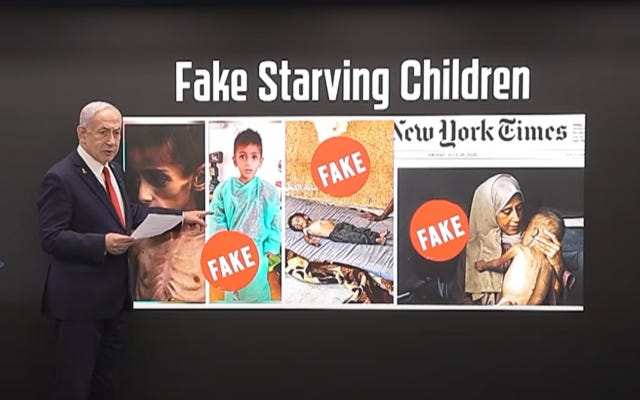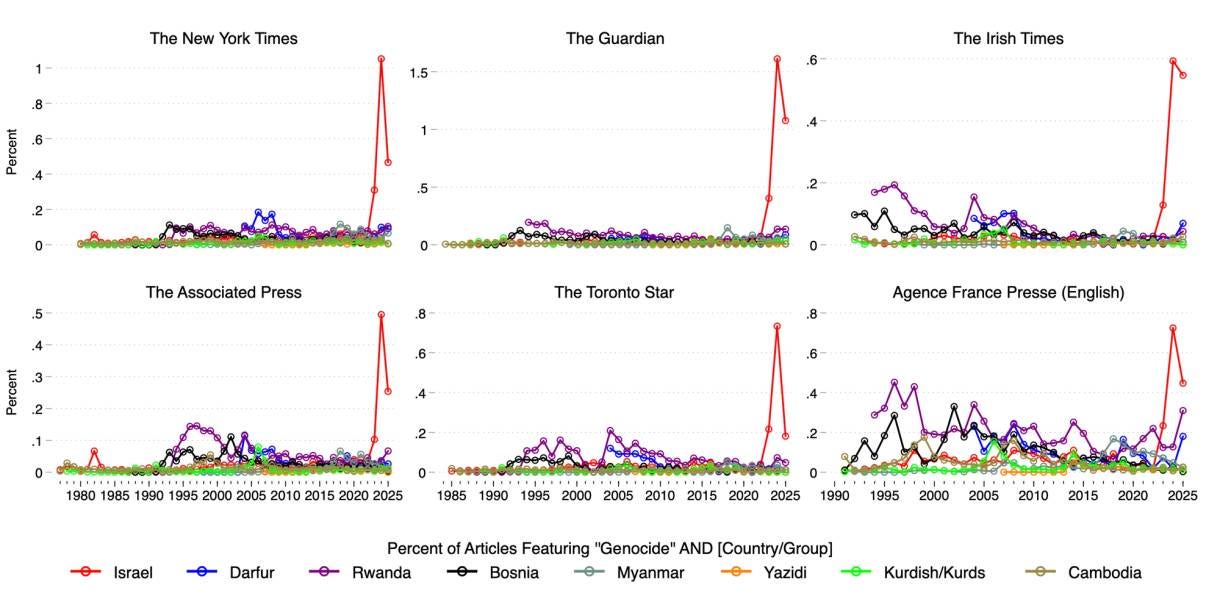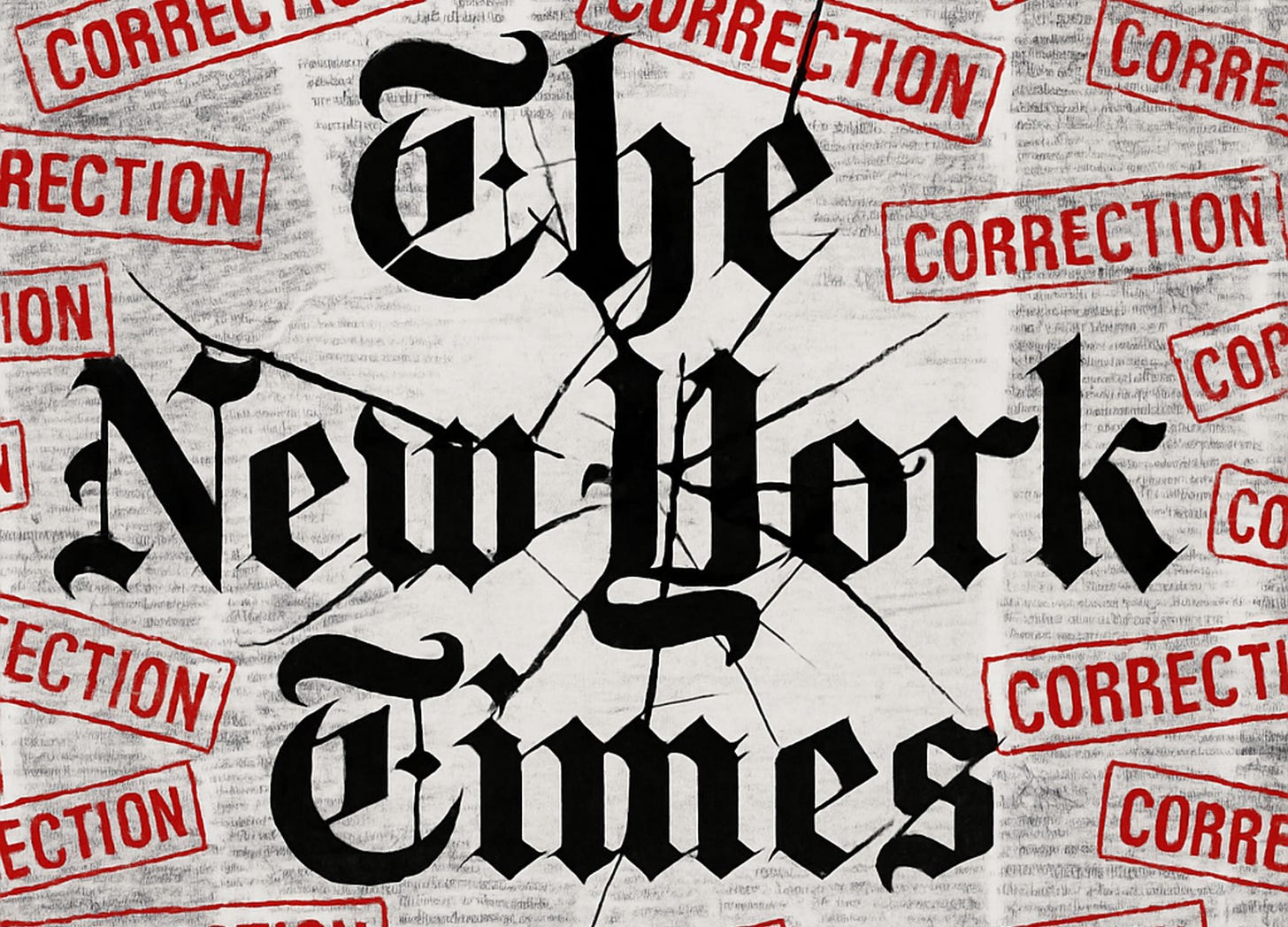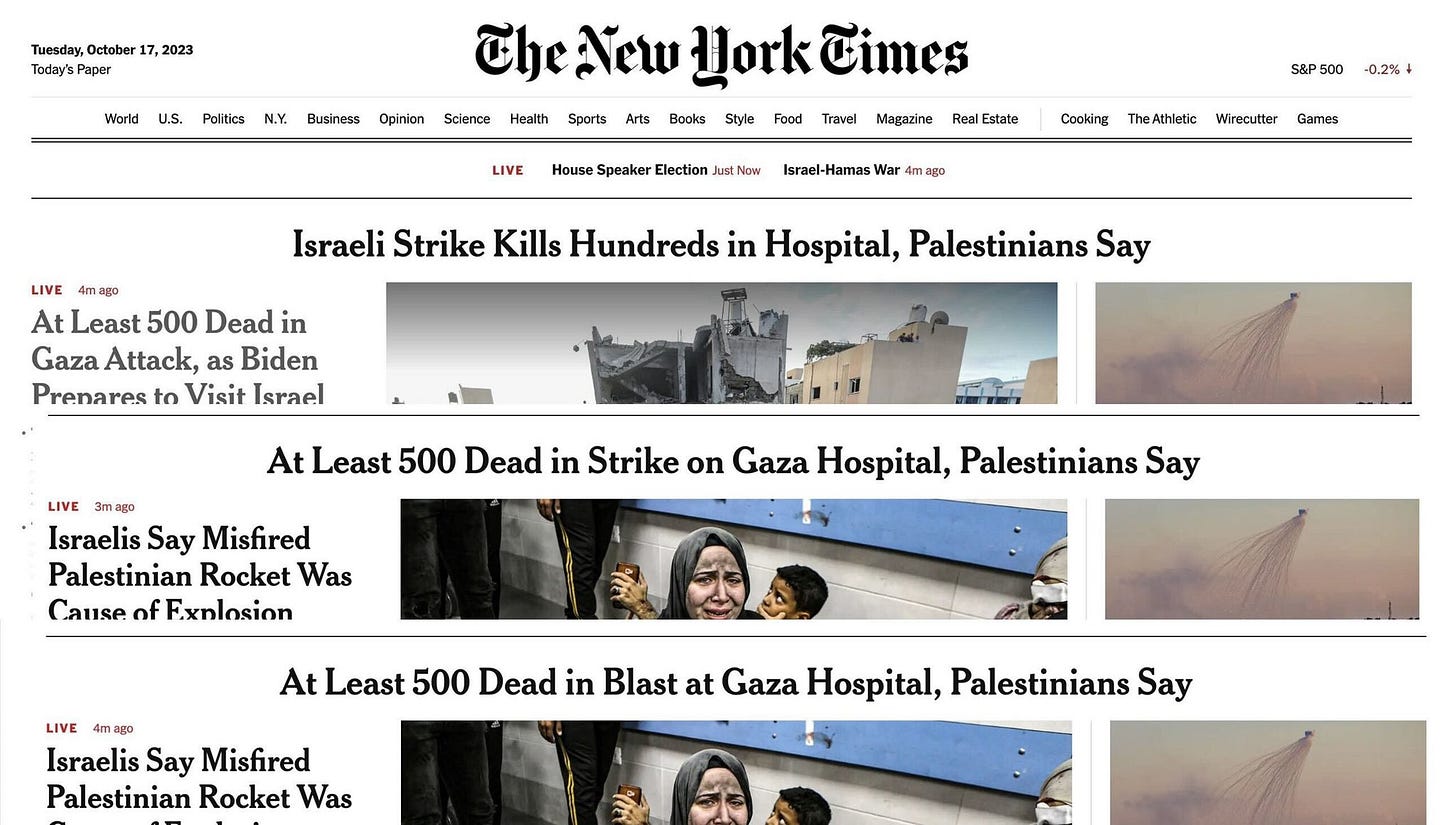Keep the New York Times Out of Gaza
The Times employs terror-linked freelancers, ran op-eds by Hamas officials, and intentionally fueled hoaxes against Israel. This isn't journalism — it’s a propaganda machine masquerading as media.
The New York Times editorial board just weighed in with a demand that Israel allow international media into Gaza.
Now, one might argue that Israel should let some of the press waltz into Gaza and galavant with the Hamas terrorists they seem to admire so much. But regardless of whether Israel decides to alter its policy, the New York Times should not be granted entry. Given the systematic, deliberate campaign the paper has waged since October 7th to harm Israel, its demands should be dismissed. It’s high time for the Times to face the consequences of its actions.
Anyways, let’s walk through just a few examples of the Times’ profound abdication of journalistic integrity, shall we?
The Starving Gaza Baby Hoax
In July 2025, the Times splashed across its front page a photo of an emaciated Gazan child—whose condition was caused not by wartime starvation, but by pre-existing cerebral palsy. The image was presented as proof of famine caused by Israel. The correction—such as it was—was buried days later, long after the damage was done. This was no isolated lapse. It was the latest expression of a decades-long pattern of skewed, selective, and at times outright false reporting about Israel.

A Pattern of Negligent, Inaccurate Journalism
A 2024 peer-reviewed study by Eytan Gilboa and Lilac Sigan, published in Israel Affairs, examined the Times’s coverage of the Israel–Hamas war from October 7, 2023, to June 7, 2024. In that period, the paper admitted to 72 errors—48 of them about Israel. Not a single one was caught internally; all were flagged by outside critics. Corrections were late, vague, and often misleading.
The most infamous case was the Al-Ahli Hospital explosion. On October 17, 2023, the Times led with: “Israeli airstrike killed 500 at a Gaza hospital, Palestinians say.” In one sentence were five major falsehoods: it wasn’t an Israeli airstrike but a misfired Palestinian Islamic Jihad rocket; it hit a parking lot, not the hospital; the death toll was 50–100, not 500; the source was Hamas’s “Ministry of Health,” not some generic “Palestinians.” The headline helped ignite riots across the Middle East and torpedoed a Biden-brokered summit in Amman. Israel immediately released audio of PIJ operatives admitting responsibility. The Times buried Israel’s denial under the original headline and left it there for hours. When the “correction” finally came, it was a minor note about the parking lot damage—no mention of PIJ, Hamas, or the actual casualty count. Only after President Biden privately blasted the headline as “irresponsible” did the paper issue an editor’s note admitting it had “relied too heavily” on Hamas claims.
The Gilboa–Sigan study documents that this wasn’t a one-time lapse. Throughout the war, the Times repeated Gaza Health Ministry casualty figures almost daily without noting the ministry is run by Hamas, without distinguishing combatants from civilians, and without acknowledging analyses that showed those figures were statistically impossible. Hamas itself later admitted that a third of its reported casualties were drawn from “media sources” or “unclear individuals.” The Times ignored that until the UN repeated it, and even then portrayed it as a mere change in sourcing. In 27 opinion pieces about Gaza casualties, the paper never once questioned Hamas’s numbers, according to Gilboa and Sigan’s study.
The same pattern held in its treatment of Israeli leaders’ words. On October 10, 2023, Defense Minister Yoav Gallant told soldiers, “Gaza will not return to what it was before. There will be no Hamas. We will eliminate it all.” The Times removed the reference to Hamas, turning a statement about eradicating a terror group into one about erasing Gaza. Prime Minister Netanyahu quoted a biblical passage about surprise attacks on the innocent; the Times misattributed it to a completely different verse with an entirely different meaning. Both misquotes were repeated in op-eds, influencing South Africa’s genocide case against Israel at the International Court of Justice, before being partially corrected—weeks later in some cases, not at all in others.
And then there’s the question of who the Times trusts to tell the story from Gaza. The paper rehired Soliman Hijjy, a freelancer it had previously fired for antisemitic posts praising Adolf Hitler, and used his work in 13 articles, including the false hospital-blast report. It employed Yousef Masoud, accused of embedding with Hamas on October 7, whose photo metadata showed it was taken just 11 minutes after the attack began—contradicting the Times’s claim of a 90-minute delay.
The Times also uses the work of Samar Abu Elouf, a Gaza-based freelancer who, in the early 2010s, taught “journalism” courses for the Popular Front for the Liberation of Palestine, a U.S.-designated terrorist organization.

In December 2023, the Times published an op-ed by Yahya Sarraj, the Hamas-appointed mayor of Gaza City. The piece repeated Hamas casualty claims and destruction figures without challenge. The backlash was immediate and bipartisan, with U.S. leaders blasting the Times for giving a propaganda platform to a Hamas official.
Moreover, a Tablet Magazine analysis found that the number of Times articles pairing “Israel” and “genocide” during the war was more than nine times higher than the paper’s peak mentions of genocide in Rwanda and nearly six times higher than during Darfur. This isn’t the cautious use of a grave legal term—it’s hyperbolic repetition, designed to imprint a frame in the public mind.

Israel’s restrictions on press access to Gaza are hardly unusual. From Afghanistan to Iraq and many other conflicts, governments fighting terror groups have routinely barred or tightly controlled journalists in active combat zones. Israel’s policy is not an outlier — it is consistent with global counter-terror operations.
But even if one argues that international media should be allowed in, the New York Times has no claim to that privilege. By spreading hoaxes, platforming Hamas officials, intentionally spreading misinformation, maliciously editing quotes from Israeli officials, and employing terror-linked, Hitler-loving “journalists,” it has forfeited the credibility required to cover Gaza responsibly.
Screw em.




The Jewish people should boycott the Times. We should stop our subscriptions, stop advertising in the Times. The Times has done nothing but hurt the cause of the Palestinians and the Israelis since October 7.
Not just the New York Crimes, but the BBC, WaPo, The Guardian etc…